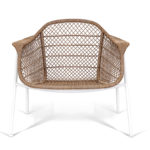Gloster's Eras of Influence: The International Style
Throughout 2023, the Gloster Blog and Newsletter will seek to explore how some of the major furniture design trends of the 20th century have connections to the furniture pieces that make up Gloster’s catalogue in the modern day. While every piece in our eminent collection is the product of an original idea from a world-class designer, the path leading to today’s furniture design was paved by a long legacy of exploration and innovation. By shining a light on various design movements and tracing a throughline from the design disciplines of yesteryear to the products of today, we seek to venerate the people and movements that brought us here while showcasing some of the most enticing and awe-inspiring aspects of Gloster’s products.
The term “International Style” was first coined by the director of the Museum of Modern Art, New York; Alfred H. Barr Jr. in 1931 for the title of a catalogue, International Style: Architecture Since 1922. Referring initially to “the work of Modern Movement architects and designers who married function and technology with a geometric vocabulary of form to produce a pared-down modern aesthetic… [International Style] is now generally associated with the less utilitarian form of Modernism that emerged after the closure of the Bauhaus in 1933”1. As an outgrowth of the functionalism and rationalism that defined the early modernist aesthetic of the Bauhaus era, the International Style represented a more stylized, less austere form of Modernism. Instead of a strict adherence to the philosophy of form following function, designers adhering to the Internationalist Style embraced a higher level of ornamentation than what an early modernist design perspective would allow for.
An illustration of this shifting design philosophy is seen in the juxtaposition of Marcel Breuer’s Bauhaus-era “B3” lounge chair and the LC furniture series produced by famed Swiss-French architect and pioneer of the Internationalist movement, Le Corbusier. Breuer’s “B3” chair is a clear example of the utilitarian functionalism of the Bauhaus era of the mid 1920s, with a heavy incorporation of the mass-production-friendly tubular steel and stark lack of ornamentation or cushioned upholstery. Corbusier’s LC series—with the pictured LC2 Grand Comfort Armchair a quintessential representation of the collection as a whole—showcases the evolution of style that had occurred in the three decades since the Bauhaus era. While the use of tubular metal for the frame remained a mainstay, the departure from the modernist design tenets of smooth-flowing organic lines and minimalistic upholstery in favor of more stylistic flair convey a sense of the changes that had occurred. 2
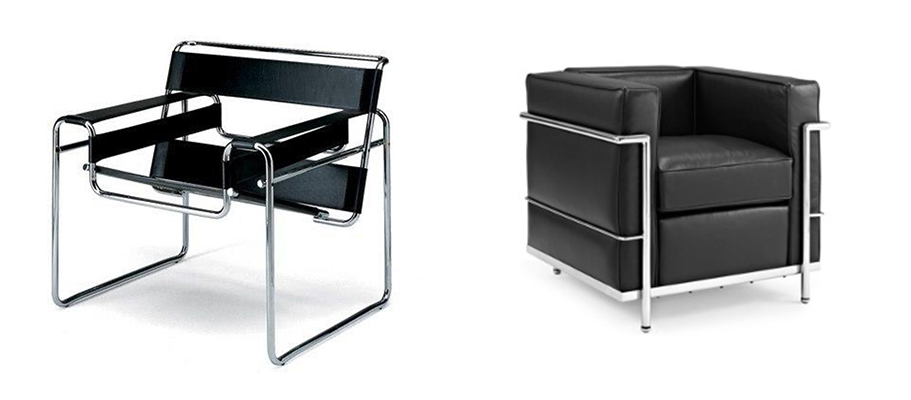
Marcel Breuer’s “B3” Chair [Left] and Le Corbusier’s “LC2 Grand Comfort Armchair”.
Just as the International Style once represented an evolution from the utilitarian foundations of modernist design, the Dune collection presents a similar stylistic progression from the more functionalist styles found in the Gloster catalogue. Introduced in 2019, Dune seating features contoured, form fitting powder coated aluminum back and arm rests, deep and plush cushions, and minimalistic teak base. In the same way that Le Corbusier’s LC series used additional frame ornamentation and plush cushions to differentiate from its austere functionalist origins, Dune’s largely proportioned seat cushions and draped blankets add the extra stylistic flair that was a key principle of the International Style.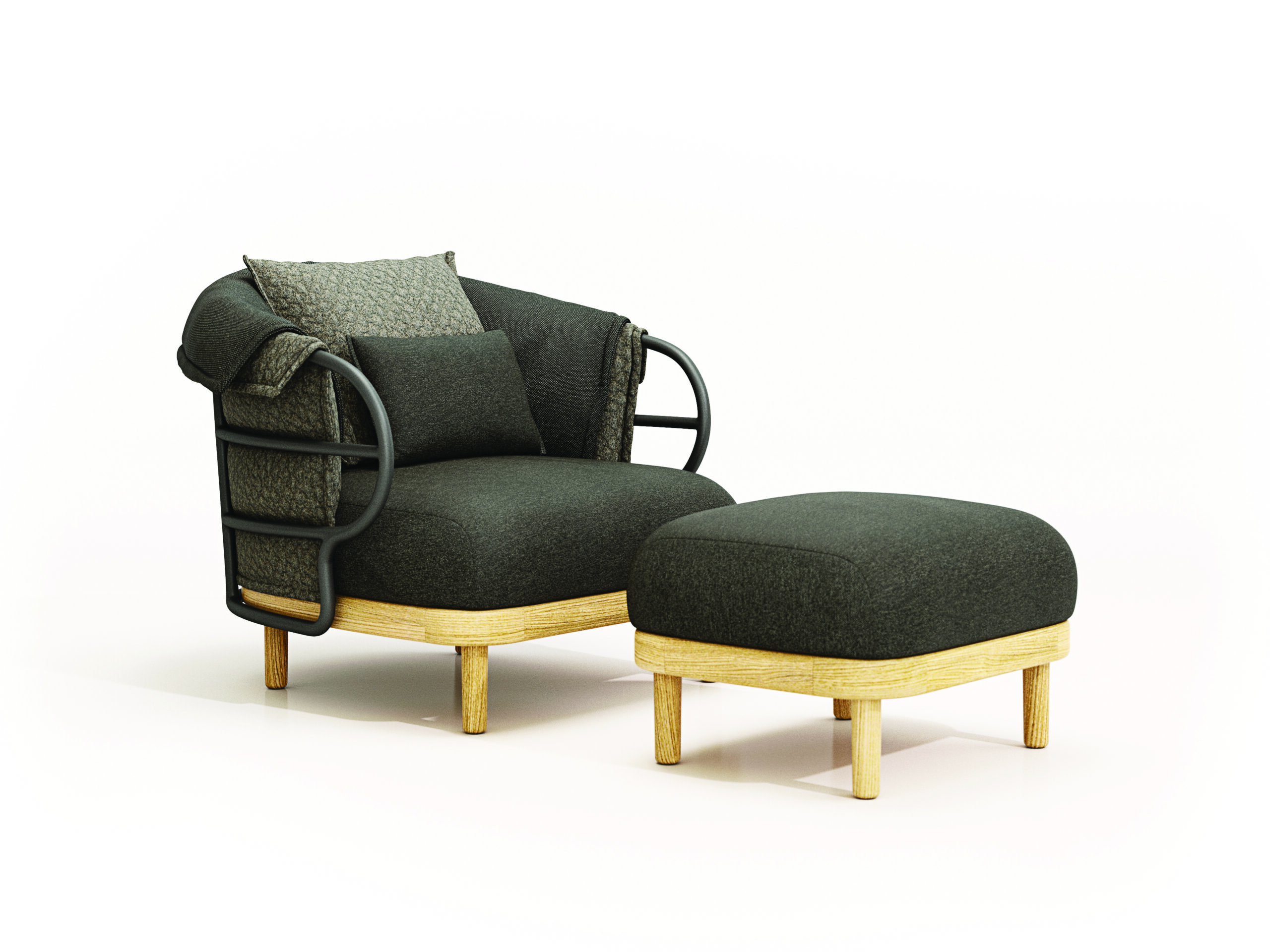 Gloster’s Dune Lounge Chair.
Gloster’s Dune Lounge Chair.
After the closure of the Bauhaus in 1933, many of its most prominent members sought refuge in the United States—including Walter Gropius and Mies van der Rohe, the school’s first and last directors. Through the influence of their continued design careers and professorships, they and other expats of the Bauhaus school helped popularize in America the design ideas and principles that would eventually come to serve as the basis for the development of the International Style. One of the most prominent adherents to these new influences was the eventual lead designer of the Herman Miller furniture company, George Nelson. In 1956, Nelson produced one of his most enduring designs with the Kangaroo Chair. With an integration of form-fitting functionality, a straight-lined frame, and the stylized ornamentation of multi-colored and -textured upholstery, this chair immediately became regarded as one of the best examples of the International Style 3.
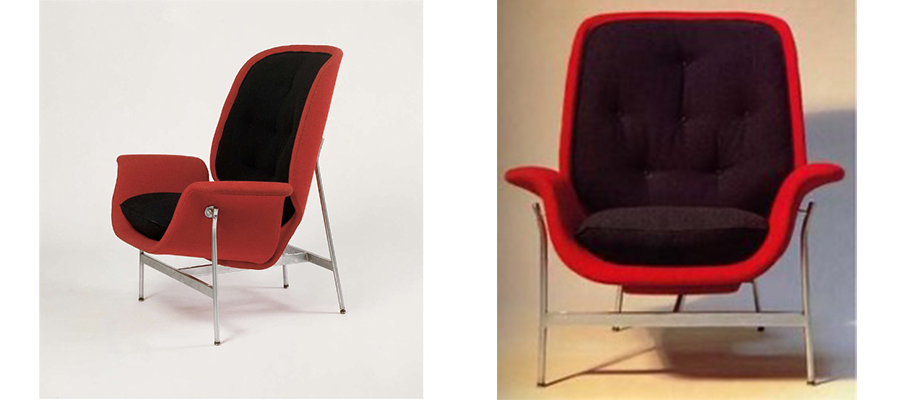
George Nelson’s “Kangaroo Chair”.
The influences of the Kangaroo Chair and the design philosophy of the International Style that promoted stylistic flair and ornamentation beyond the Modernist aesthetic are easily recognizable in Gloster’s Fresco Collection. Introduced for the 2022 season by designers Matteo Thun and Benedetto Fasciana, Fresco’s incorporation of an intricate weave of outdoor wicker over a form-fitting frame and straight-lined powder coated aluminum base belie a modern interpretation of the Internationalist legacy.
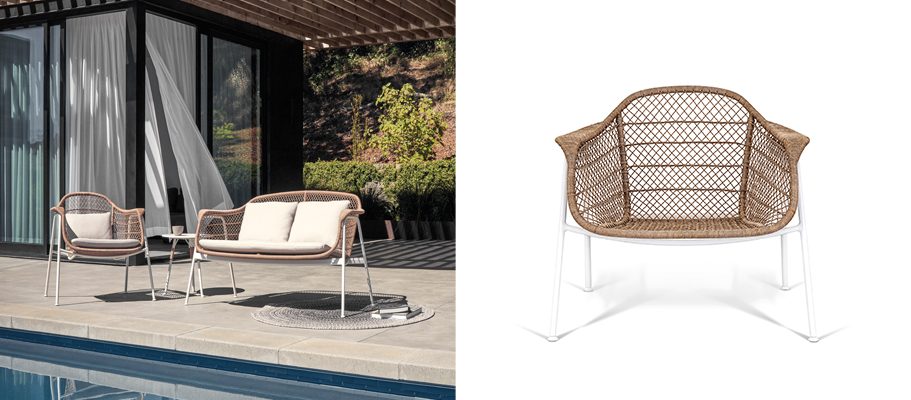
Gloster’s Fresco Collection.
Make sure to keep up with Gloster’s Blog and Newsletter throughout 2023 as we continue our exploration in Gloster’s Eras of Influence, and check out our first post on this topic here.
Citation 1: Fiell, Charlotte, and Peter Fiell. “International Style.” Design of the 20th Century, TASCHEN GmbH, Cologne, 2012, pp. 344–349.
Citation 2: Fiell, Charlotte, and Peter Fiell. “Marcel Breuer.” 1000 Chairs, Taschen, Köln, 2000, pp. 104–105.
Citation 3: Fiell, Charlotte, and Peter Fiell. “George Nelson.” Design of the 20th Century, TASCHEN GmbH, Cologne, 2012, pp. 505-509.
